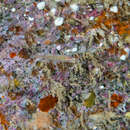Diagnostic Description
provided by Fishbase
Males have longer dorsal spines and yellow spotting on the fins (Ref. 1602); characterized further by semi-translucent upper part of body, pinkish orange below; head and median fins with yellow orange spots; elongate and filamentous second dorsal spine; fifth pelvic ray branched, 75-85% length of fourth ray; longitudinal scale series 23-24; predorsal scales absent; cheek and opercle without scales; depth of body 4.0-4.2 in SL (Ref. 90102).
- Recorder
- Cristina V. Garilao
Morphology
provided by Fishbase
Dorsal spines (total): 7; Dorsal soft rays (total): 10 - 11; Analspines: 1; Analsoft rays: 9 - 10
- Recorder
- Cristina V. Garilao
Trophic Strategy
provided by Fishbase
Occurs in caves of dropoffs at depths of about 25 to at least 50 m; form loose schools near the roofs or sides of caves and disappears into holes or crevices when approached. Often seen with other species of Trimma and feeds on harpaticoid copepods.
- Recorder
- Drina Sta. Iglesia
Biology
provided by Fishbase
Occur in caves of drop-offs at depths of about 25 to at least 50 m (Ref. 48637, 58302). Benthopelagic (Ref. 58302). Form loose schools near the roofs or sides of caves and disappears into holes or crevices when approached. Often seen with other species of Trimma and feeds on harpacticoid copepods (Ref. 48637).
- Recorder
- Estelita Emily Capuli

